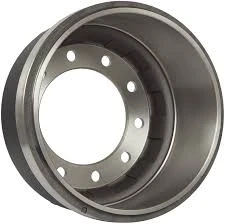
-
 Afrikaans
Afrikaans -
 Albanian
Albanian -
 Amharic
Amharic -
 Arabic
Arabic -
 Armenian
Armenian -
 Azerbaijani
Azerbaijani -
 Basque
Basque -
 Belarusian
Belarusian -
 Bengali
Bengali -
 Bosnian
Bosnian -
 Bulgarian
Bulgarian -
 Catalan
Catalan -
 Cebuano
Cebuano -
 Corsican
Corsican -
 Croatian
Croatian -
 Czech
Czech -
 Danish
Danish -
 Dutch
Dutch -
 English
English -
 Esperanto
Esperanto -
 Estonian
Estonian -
 Finnish
Finnish -
 French
French -
 Frisian
Frisian -
 Galician
Galician -
 Georgian
Georgian -
 German
German -
 Greek
Greek -
 Gujarati
Gujarati -
 Haitian Creole
Haitian Creole -
 hausa
hausa -
 hawaiian
hawaiian -
 Hebrew
Hebrew -
 Hindi
Hindi -
 Miao
Miao -
 Hungarian
Hungarian -
 Icelandic
Icelandic -
 igbo
igbo -
 Indonesian
Indonesian -
 irish
irish -
 Italian
Italian -
 Japanese
Japanese -
 Javanese
Javanese -
 Kannada
Kannada -
 kazakh
kazakh -
 Khmer
Khmer -
 Rwandese
Rwandese -
 Korean
Korean -
 Kurdish
Kurdish -
 Kyrgyz
Kyrgyz -
 Lao
Lao -
 Latin
Latin -
 Latvian
Latvian -
 Lithuanian
Lithuanian -
 Luxembourgish
Luxembourgish -
 Macedonian
Macedonian -
 Malgashi
Malgashi -
 Malay
Malay -
 Malayalam
Malayalam -
 Maltese
Maltese -
 Maori
Maori -
 Marathi
Marathi -
 Mongolian
Mongolian -
 Myanmar
Myanmar -
 Nepali
Nepali -
 Norwegian
Norwegian -
 Norwegian
Norwegian -
 Occitan
Occitan -
 Pashto
Pashto -
 Persian
Persian -
 Polish
Polish -
 Portuguese
Portuguese -
 Punjabi
Punjabi -
 Romanian
Romanian -
 Russian
Russian -
 Samoan
Samoan -
 Scottish Gaelic
Scottish Gaelic -
 Serbian
Serbian -
 Sesotho
Sesotho -
 Shona
Shona -
 Sindhi
Sindhi -
 Sinhala
Sinhala -
 Slovak
Slovak -
 Slovenian
Slovenian -
 Somali
Somali -
 Spanish
Spanish -
 Sundanese
Sundanese -
 Swahili
Swahili -
 Swedish
Swedish -
 Tagalog
Tagalog -
 Tajik
Tajik -
 Tamil
Tamil -
 Tatar
Tatar -
 Telugu
Telugu -
 Thai
Thai -
 Turkish
Turkish -
 Turkmen
Turkmen -
 Ukrainian
Ukrainian -
 Urdu
Urdu -
 Uighur
Uighur -
 Uzbek
Uzbek -
 Vietnamese
Vietnamese -
 Welsh
Welsh -
 Bantu
Bantu -
 Yiddish
Yiddish -
 Yoruba
Yoruba -
 Zulu
Zulu
Feb . 03, 2025 05:55
Back to list
drum brake anchor pin
The drum brake anchor pin may not be the most talked-about component in the realm of automotive repair, yet its role is pivotal for the safety and efficiency of drum brake systems. With its fundamental responsibility of acting as the fulcrum for the brake shoes, ensuring correct alignment, and holding the brake shoes in their intended position, the anchor pin's contribution to the functionality and reliability of drum brakes cannot be overstated.
Authority in the automotive repair community comes not just from knowledge, but also from endorsements and certifications. Mechanics possessing certifications from recognized bodies such as the National Institute for Automotive Service Excellence (ASE) bring a level of credibility and trust that can assure vehicle owners of the proficiency involved in anchor pin services. Trustworthiness, a cornerstone of any sound relationship between a mechanic and a vehicle owner, can be enhanced through transparency and education. When replacing a drum brake anchor pin, mechanics should take the time to explain the process, the reasons for replacement, and the expected improvements. Providing customers with visual aids or allowing them to view the worn components can demystify the process, turning what might seem an abstract repair into a concrete, understandable improvement. Overall experience reveals that while the drum brake anchor pin might not command the same attention as calipers or rotors in disc brake systems, it is among the essential components ensuring safe and efficient operation. Its understated presence demands respect and understanding from those maintaining drum brake systems. As automobiles evolve, so too must the knowledge and practices regarding all their components, with the anchor pin being no exception. Embracing its importance with experience, expertise, authority, and trust forms the bedrock of superior automotive care and service.


Authority in the automotive repair community comes not just from knowledge, but also from endorsements and certifications. Mechanics possessing certifications from recognized bodies such as the National Institute for Automotive Service Excellence (ASE) bring a level of credibility and trust that can assure vehicle owners of the proficiency involved in anchor pin services. Trustworthiness, a cornerstone of any sound relationship between a mechanic and a vehicle owner, can be enhanced through transparency and education. When replacing a drum brake anchor pin, mechanics should take the time to explain the process, the reasons for replacement, and the expected improvements. Providing customers with visual aids or allowing them to view the worn components can demystify the process, turning what might seem an abstract repair into a concrete, understandable improvement. Overall experience reveals that while the drum brake anchor pin might not command the same attention as calipers or rotors in disc brake systems, it is among the essential components ensuring safe and efficient operation. Its understated presence demands respect and understanding from those maintaining drum brake systems. As automobiles evolve, so too must the knowledge and practices regarding all their components, with the anchor pin being no exception. Embracing its importance with experience, expertise, authority, and trust forms the bedrock of superior automotive care and service.
Next:
Latest news
-
Rear Drum Brakes Maintenance TipsNewsAug.04,2025
-
Key Components Affecting Brake Drum FunctionNewsAug.04,2025
-
Important Inspection for Truck Drum BrakeNewsAug.04,2025
-
How to Prepare for Changing Rear Drum BrakesNewsAug.04,2025
-
Essential Tools for Cleaning Drum Brakes ProperlyNewsAug.04,2025
-
Brake Drum Function GuideNewsAug.04,2025
-
Safety Features of Red Brake DrumsNewsAug.01,2025
